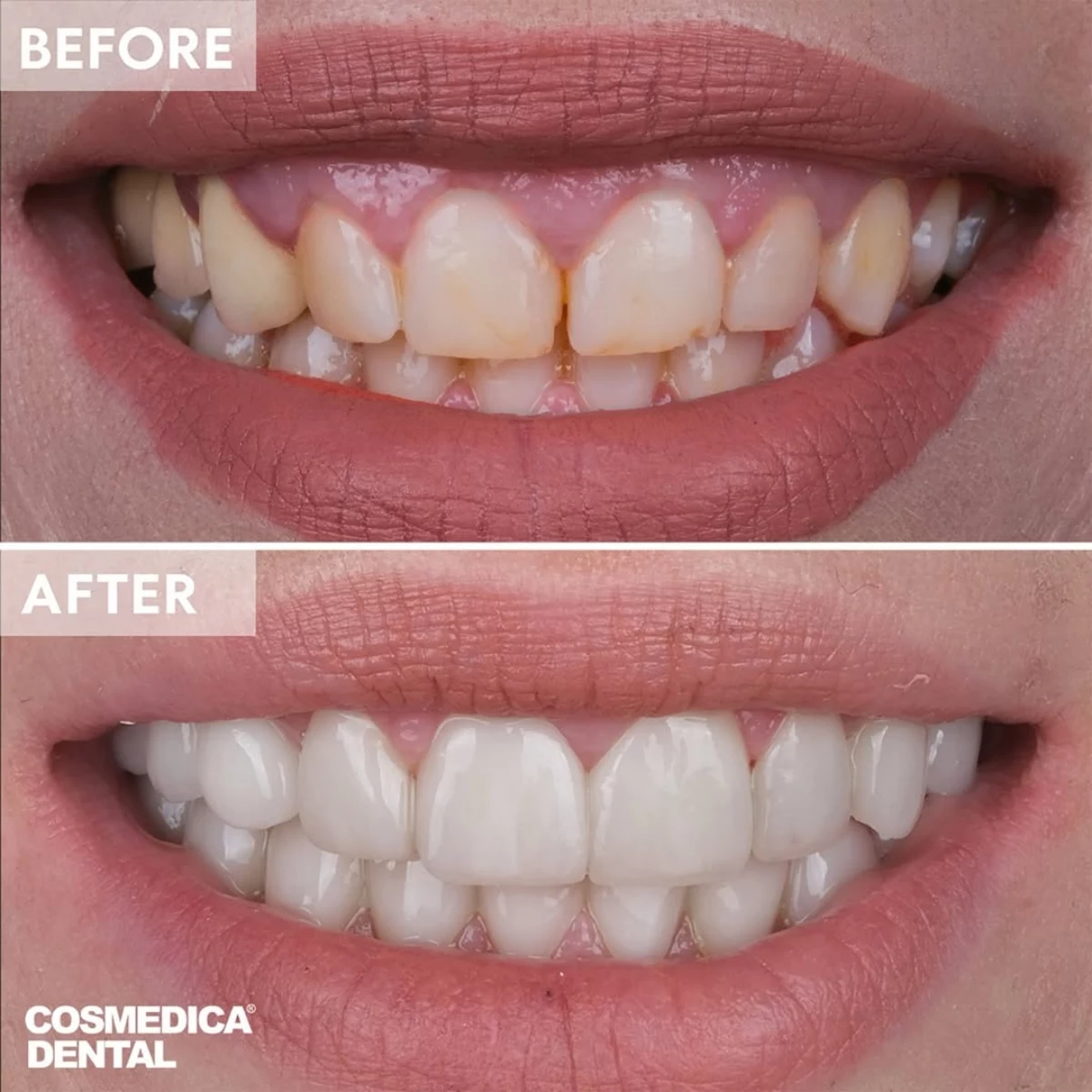The Real Deal on Dental Work in Turkey: An Insider’s Guide
Over my career, I’ve seen a massive shift. It feels like every week, a patient sits in my chair, phone in hand, showing me a dazzling ‘before and after’ from a clinic in Turkey. The smiles are perfect, the prices are jaw-droppingly low, and I get it. I truly do. The cost of top-tier dental care can be a huge hurdle, and the promise of a ‘dental holiday’ is incredibly tempting.
In this article
So, let’s be clear. My goal here isn’t to talk you out of it. It’s to give you the same candid advice I’d give my own family, based on years of experience both creating new smiles and, frankly, fixing work that went wrong. The quality of care you can find abroad ranges from world-class to downright dangerous. Knowing how to tell the difference is everything.
First, a Quick Reality Check on Time & Money
Before we dive in, let’s get a handle on what you’re really looking at. A typical trip for major work usually requires one to two weeks on the ground. And listen, if you’re getting implants, you’ll likely need two separate trips several months apart to allow for proper healing. As for cost, a full set of high-quality Zirconia crowns might run you between £4,000 and £7,000 in a good Turkish clinic, compared to £20,000 or more back home. But always budget for flights, your stay, and a few extra ‘recovery’ days before you even think about flying back.

So, Why Is It So Much Cheaper?
People always ask me if the low prices mean they’re using cheap, shoddy materials. Usually, that’s not the main reason. It really boils down to simple economics. The cost of running a business—things like rent for a prime location, staff salaries, and insurance—is significantly lower there. On top of that, the government often provides incentives to clinics that cater to international patients, which helps push the prices down even further.
This is why they can offer prices that are often 50-70% less than what you’d pay in the UK, Europe, or the US. And for someone needing a full mouth restoration, that’s a life-changing amount of money.
You’ll also see these clinics heavily promoting their fancy tech: 3D scanners, in-house crown-milling machines, and all the latest gadgets. This stuff is great—I use it in my own practice. But a tool is only as good as the hands that guide it. The most advanced scanner in the world can’t make up for a lack of skill, poor judgment, or a treatment plan that isn’t right for you. Technology is a helper, not a replacement for expertise.
Let’s Talk About the Actual Procedures
To make a smart choice, you have to understand what you’re signing up for. Let’s break down the two most popular treatments people travel for.
Dental Implants: The Gold Standard (When Done Right)
A dental implant is a small, surgical-grade titanium post that’s placed into your jawbone to act like the root of a missing tooth. It’s the strongest, most permanent solution we have.
The science behind it is a biological process called osseointegration (a fancy term for your bone literally fusing to the titanium). This is what creates that rock-solid foundation, but it takes time—typically 3 to 6 months. This healing period is non-negotiable and cannot be rushed. It’s why you should be EXTREMELY skeptical of any place promising ‘a full mouth of permanent implants in one day’.
Heads up! For this process to even have a chance of success, you need enough healthy bone. This is why a 3D CBCT scan (Cone Beam Computed Tomography) is absolutely mandatory before surgery. A flat, 2D x-ray is not enough. The 3D scan lets the surgeon see the exact height, width, and density of your jawbone and map out where your nerves and sinuses are. Skipping this step is like building a house without surveying the foundation first. It’s a gamble you don’t want to take.
I’ve seen the unfortunate aftermath of rushed jobs. I once consulted with a gentleman who got a full set of implants and permanent teeth in a single week-long trip. A year later, half of them had failed. Our scans showed they were drilled into thin bone at bad angles, with one terrifyingly close to a major nerve. The corrective work—which involved removing the failed implants and extensive bone grafting—ended up costing him three times what he thought he’d ‘saved’.
But on the flip side, I also have patients who did it right. One woman I know did her homework relentlessly. She insisted on a video call with the actual surgeon, not a salesperson. She received a detailed plan for her Straumann implants (a top-tier brand) and was given an ‘implant passport’ with all the specs before she left. Years later, her smile is healthy and stable because she prioritized the surgeon’s credentials over a rock-bottom price.
Veneers vs. Crowns: Unpacking the ‘Hollywood Smile’
This is where the most dangerous confusion happens, largely because of the ‘Turkey Teeth’ trend you see online. People are being sold ‘veneers’ but are actually getting something far more aggressive.
Let’s clear this up right now:
- A traditional veneer is a super-thin porcelain shell, about as thick as a contact lens, that gets bonded to the front of your tooth. To place it, we only need to remove a tiny sliver of enamel (about 0.5mm). It’s a minimally invasive procedure designed purely for cosmetic enhancements on otherwise healthy teeth.
- A crown is a cap that covers the entire tooth. To fit a crown, the tooth has to be filed down substantially from all sides into a small peg. This is a much more destructive procedure. It’s the correct treatment for a tooth that’s broken or has a massive filling, but it’s biological overkill for a healthy tooth.
The ‘Turkey Teeth’ look is often achieved by grinding down 20 healthy teeth into pegs and placing 20 crowns. This is NOT a set of veneers. This aggressive removal of healthy tooth structure permanently weakens the teeth and dramatically increases your long-term risk for nerve death, root canals, and chronic gum problems. A good dentist’s primary goal is to preserve healthy tooth tissue, not destroy it for cosmetic reasons.
By the way, when you’re discussing materials, ask specifically what they use. High-end ceramics like E.max or Zirconia look incredibly natural and are very strong. Cheaper PFM (Porcelain-Fused-to-Metal) crowns have a metal base that can create an ugly dark line at your gum line over time.
Your Pre-Flight Checklist: How to Spot the Good Clinics
If you’re serious about this, you need to become your own best advocate. You’re not buying a TV; you’re choosing a surgeon. Here are the green flags to look for and the red flags to avoid.
1. The Consultation is Everything
A proper consultation can’t happen over WhatsApp. A good clinic will insist on a video call with the actual dentist (not a coordinator) who will be doing your work. They’ll want your full dental history and recent x-rays. Be very wary of any clinic that gives you a quote based on a few selfies.
Lesser-known trick: Send the clinic this specific question in an email: “For my healthy front teeth, can you please confirm in writing that you will be placing minimal-prep veneers with 0.3-0.5mm of enamel removal, and not aggressive-prep crowns?” Their answer will tell you everything you need to know about their ethics.
2. Check Their Credentials
In Turkey, dentists must be registered with the Turkish Dental Association (TDA). Ask for the dentist’s registration number. It’s also a great sign if the clinic has an ISO 9001 certification, which is an international standard for quality management. It shows they care about having reliable, repeatable processes.
3. Read Reviews with a Magnifying Glass
Go beyond the 5-star ratings. Look for detailed reviews on independent sites like Google and Trustpilot. The best ones mention the specific procedures, talk about the healing process, and give an update months after they’ve returned home. Quick tip: Pop their ‘before and after’ photos into a reverse image search. You’d be surprised how often clinics steal photos from other dentists’ websites. It’s a massive red flag.
4. Demand a Detailed, Written Plan
Never, ever proceed without a formal treatment plan. This is your contract. It should spell out every single procedure, the exact materials to be used (e.g., ‘Ivoclar E.max porcelain veneer,’ not just ‘veneer’), a full cost breakdown with no hidden fees, and the details of their guarantee. Speaking of which, understand what that guarantee really covers. It’s usually for material failure (like a crown breaking), not biological failure (like an implant not integrating).
The Trip and Recovery: What It’s Really Like
Remember, you’re going for surgery, not a sun-soaked holiday. Fly in a day or two early to rest. Don’t book sightseeing tours for the days immediately after your procedure. You will likely have swelling, bruising, and discomfort. Your job is to rest and heal.
Here’s a more realistic recovery timeline for something like major crown work or implants:
- Day 1-2: This is peak swelling and discomfort. You’ll be on a liquid/soft food diet (soups, smoothies, yogurt). Your face will likely be puffy and bruised.
- Day 3-5: Swelling should start to go down, but you’ll still be tender. You can probably move on to softer solids like scrambled eggs or pasta. Stick to the pain relief schedule the clinic gives you.
- Day 6-7: You should be feeling much more like yourself. The obvious swelling will have subsided, but you’ll still need to be careful with what you eat. This is the absolute earliest you should consider flying home.
The Part No One Talks About: When You Get Home
This is critical. Your new teeth need lifelong care. The problem is, many dentists in your home country will be reluctant to touch complex work done by someone else. They don’t know the implant system used or the exact materials in your crowns. If something goes wrong, they may not have the tools or parts to fix it.
Before you even book a flight, have a plan. Get a complete file from the Turkish clinic before you leave. This must include an ‘implant passport’ (detailing the brand, size, and lot number) and a list of all materials used. Without this, helping you is nearly impossible for a dentist back home.
My Final Thoughts
Look, going to Turkey for dental work can be a fantastic option. There are brilliant, ethical surgeons and state-of-the-art clinics providing incredible value. But there are also ‘smile factories’ that prioritize profit over your health, pushing aggressive treatments with no regard for the long-term consequences.
The responsibility to tell them apart rests entirely on you. Do your research until you’re tired of it. Ask the hard questions. Put your long-term health above a quick fix or the lowest possible price. Your smile is priceless, but the health of your teeth and jaw is for life. Choose wisely.
Inspirational Gallery
Zirconia Crowns: Made from zirconium dioxide, they are incredibly strong and durable, making them ideal for full-mouth restorations and for patients who grind their teeth. They offer a good aesthetic but can be more opaque than other options.
E-max Crowns: These are made from lithium disilicate ceramic. They are known for their superb translucency and aesthetic qualities, perfectly mimicking a natural tooth. They are a top choice for front teeth but may not be suitable for bridges in all cases.
Ultimately, E-max (a popular brand by Ivoclar Vivadent) often wins for the most natural look, while Zirconia is the champion of strength.
The British Dental Association has reported a significant increase in UK dentists seeing patients with complications from overseas treatment, with 86% of those surveyed in 2022 having treated cases stemming from dental tourism.
This isn’t to scare you, but to empower you. The key takeaway is the vital importance of aftercare. Before you travel, have a frank conversation with your local dentist. Some may be hesitant to treat work they didn’t perform, so understanding who will manage your long-term hygiene and any potential complications is a non-negotiable part of your plan.
What exactly is a ‘Hollywood Smile’ and is it right for me?
The term typically refers to a super-white, perfectly uniform set of teeth. While striking on screen, this aesthetic can look artificial in person. True smile design is about harmony, not just brightness. A world-class dentist will consider your facial shape, skin tone, and even the whites of your eyes to create a smile that is both beautiful and believable. Don’t be afraid to ask for a ‘natural but enhanced’ look; bring photos of smiles you admire, and discuss subtle imperfections that make a smile unique and genuine.
When vetting a clinic, move beyond the glossy Instagram feed. Here are the essentials to demand before you even think about booking a flight:
- A detailed treatment plan in English, specifying each procedure, the exact materials to be used (including brand names like Straumann or Nobel Biocare for implants), and a full cost breakdown.
- The full name and professional registration number of the specific dentist who will be performing your treatment.
- Clear, high-resolution photos of their sterilisation equipment.
- Details of their professional indemnity insurance.
The critical difference: Aggressively filing healthy teeth down to small pegs for crowns when only veneers were needed is a major red flag. This is often done because it’s faster and easier for the lab, but it needlessly removes healthy tooth structure. A veneer is a thin shell bonded to the front of the tooth, preserving most of its natural integrity. A crown covers the entire tooth. Insist on understanding why one is recommended over the other. If you have healthy, well-aligned teeth and just want to change their shape or colour, question any plan that involves aggressive ‘shark tooth’ preparation.
A clinic’s guarantee is only as good as its willingness and ability to honour it.
A 5-year or even a lifetime guarantee sounds incredible, but what does it actually cover? Does it include the cost of flights and accommodation if you need to return for remedial work? Or does it only cover the cost of the replacement crown itself? Ask for the guarantee policy in writing and read the fine print. A reputable clinic will be transparent about the terms and conditions.
Beyond the cost of the treatment itself, remember to build a buffer into your budget. Many patients forget to account for:
- Travel insurance that specifically covers planned medical procedures abroad.
- The cost of soft foods and pharmacy essentials (painkillers, antiseptic mouthwash) during your recovery.
- Potential flight change fees if your recovery takes longer than expected.
- The cost of initial consultations and X-rays with your home dentist both before you go and after you return.
- A fit that feels completely natural, with no high spots when you bite.
- Margins so seamless you can’t feel the edge of the crown with your tongue.
- A colour and translucency that blends perfectly with neighbouring teeth.
The secret? The dental technician. The dentist prepares the tooth, but a master ceramist in the lab is the artist who actually crafts your crown. Ask the clinic if they have an in-house lab or to see examples of their technician’s work. The synergy between dentist and technician is what creates a truly world-class result.
Communication is everything. While many clinics have English-speaking patient coordinators, they may not be in the treatment room with you. Politely insist that your treating dentist speaks English fluently or that a dedicated, medically-trained translator is present throughout the entire procedure. Misunderstandings about pain, comfort, or the aesthetic outcome are far more likely when you can’t communicate directly and effectively with the person performing the work.
The most advanced CAD/CAM milling machine can’t create art. It can replicate a design, but it can’t account for the subtle nuances of a patient’s personality or the way light hits a tooth in a natural smile. Technology is a phenomenal tool, but artistry comes from the human hand and eye.










